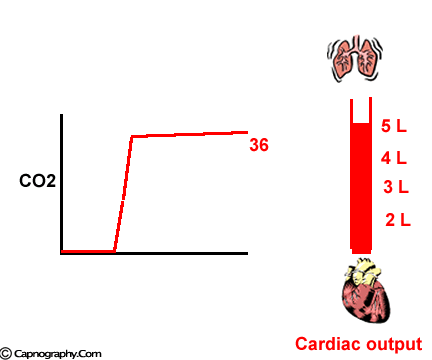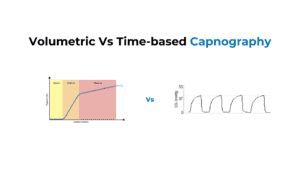Cardiac output can be predicted using an EtCO2 (capnography) monitor because they are linearly related. In other words, Cardiac Output rise with increased EtCO2 and fall with decreased EtCO2 levels. Hence, it is beneficial in critical care and operation theatre to monitor and manage patient parameters.
Cardiac output (CO) and End-tidal carbon dioxide (EtCO2) are two key physiological parameters related to circulatory and respiratory physiology.
Cardiac Output (CO):
Cardiac output is the volume of blood that the heart pumps into the systemic circulation per unit of time, typically measured in litres per minute (L/min). It used to assess cardiovascular health and function.
CO is calculated by multiplying the heart rate (HR, in beats per minute) and stroke volume (SV, the volume of blood ejected by the left ventricle with each heartbeat).
CO = HR x SV
Changes in CO can be indicative of various cardiac and circulatory conditions.
- An increase in CO may occur in response to exercise, fever, or certain medical conditions, while a decrease in CO can be observed in conditions such as heart failure or shock.
End-tidal Carbon Dioxide (EtCO2):
EtCO2 represents the partial pressure of carbon dioxide (CO2) at the end of expiration during each respiratory cycle. It is measured using capnography, a non-invasive technique that monitors exhaled CO2 levels. In healthy individuals, EtCO2 is usually about 35-45 mmHg.
The relationship between Cardiac Output and EtCO2 helps in the diagnosis of a patient:
- Changes in CO can affect EtCO2: Increased cardiac output can enhance blood flow to the lungs, leading to increased CO2 transport to the alveoli for exhalation. This can result in a higher EtCO2 value. Conversely, a decrease in cardiac output may lead to decreased blood flow to the lungs, reducing the transport of CO2 to the alveoli and potentially resulting in a lower EtCO2 value.
- EtCO2 as an indicator of circulation: In conditions where cardiac output is compromised, such as in cardiac arrest or severe shock, EtCO2 levels may drop significantly because of reduced blood flow to the lungs and reduced CO2 elimination. Monitoring EtCO2 during resuscitation efforts can provide valuable information about the effectiveness of cardiopulmonary resuscitation (CPR) and the return of spontaneous circulation (ROSC).

The direct relation between EtCO2 and Cardiac Output is helpful for doctors in Operation Theatre settings while managing their patients.
References:
- Capnography.com [Link]
—
[Click here] to learn more interesting things about capnometers.
Comment your views and feedback for improvements. You are an inspiration to us. 😇









